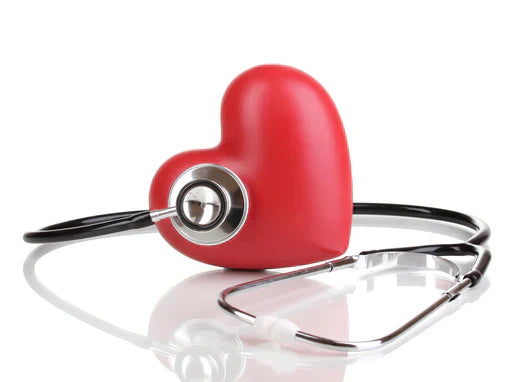
blog
|January 8, 2025
Share :
The real culprit behind heart disease
by Mona Jauhar RDN, LD
Worried about your heart health? Get your cholesterol checked. If the LDL-HDL ratio reads fine, you are fine too. Is it really so simple? Is cholesterol really the yardstick for heart ailments affecting millions of people worldwide? The craze for treating cholesterol has led to an onslaught of pharmaceuticals designed to “lower cholesterol.” Statins are now the number one selling class of drugs in the United States and new cholesterol medications are produced every day. Sure, the medications lower bad cholesterol. But how far have they controlled heart attacks and deaths?
Mona's recommended supplements for Heart Health
 |
 |
 |

|
Drugs don’t uproot the problem
How can drugs treat a chronic disease when the causes are rooted in what we eat, how much we move, how we face stress, how connected we are to our communities, and toxic chemicals and metals in our environment. The culprit isn’t cholesterol when it comes to heart disease, it is what we put inside our bodies. Abnormal cholesterol levels are just a downstream problem resulting from a continuum of blood sugar and insulin imbalances that range from pre-diabetes to full-blown end stage diabetes. Taking a pill won’t reverse this biology, only a lifestyle shift will.
Metabolic syndrome at play
Metabolic syndrome or pre-diabetes is the leading cause of heart disease, diabetes, and a variety of other chronic illnesses in this country. Instead of focusing on cholesterol alone, doctors must look for symptoms of metabolic syndrome when examining a patient for heart problems. Also, instead of looking just at the cholesterol numbers, they need to look at the cholesterol particle size. Small particles are associated with pre-diabetes (or metabolic syndrome) and diabetes and are caused by insulin resistance. So, your health risk has less to do with your cholesterol numbers than it does the quantity and size of your cholesterol particles! Luckily, high cholesterol and pre-diabetes, or metabolic syndrome, can be successfully diagnosed and treated purely with the following lifestyle interventions:
Get the right tests done: Check NMR particle sizes for cholesterol by asking your doctor for this test at Labcorp or LipoScience. You want to know if you have safe, light, and fluffy cholesterol particles, or small, dense, artery damaging cholesterol particles. A regular cholesterol test won’t tell you this.
Eat healthy: In general, a diet that's low in saturated fats, trans fat, cholesterol, and salt -- and high in fruits, vegetables, lean protein, beans and whole grains -- has been shown to help people with high blood pressure and a higher risk of cardiovascular disease.
Get enough exercise: Even if you don't lose a single pound, exercise can lower blood pressure, improve cholesterol levels, and improve insulin resistance. If you're out of shape, start slowly. Try walking more. Work more physical activity into your day
Sleep more: A number of studies have linked short-term sleep deprivation with several well-known risk factors for heart disease, including higher cholesterol levels, higher triglyceride levels, and higher blood pressure.
Look for red flags:
- If your waist/hip is greater than 0.8 if you are a woman or 0.9 if you are man, then you have a problem.
- If you have small LDL and HDL particles, you have metabolic syndrome.
- If your triglycerides are greater than 100 and your HDL is less than 50, or the ratio of triglycerides to HDL is greater than 4, then you have metabolic syndrome.
- Do a glucose insulin challenge test.
- Check your hemoglobin A1c, if it is greater than 5.5, you may have metabolic syndrome.
Use supplements to support healthy cholesterol particle size: Vitamin D3, omega 3s, biotin, vitamin B3, anti inflammatories like curcumin and resveratrol can help. Take in consultation with your health advisor. Use low-dose statins ONLY if you have had heart disease.
References:
(i) Cannon, C.P., Shah, S., Dansky, H.M. et al. 2010. Safety of anacetrapib in patients with or at high risk for coronary heart disease. N Engl J Med. 363(25): 2406–2415.
(ii) Barter, P.J., Caulfield, M., Eriksson, M. et al. 2007. Effects of torcetrapib in patients at high risk for coronary events. N Engl J Med. 357(21):2109-2122.






